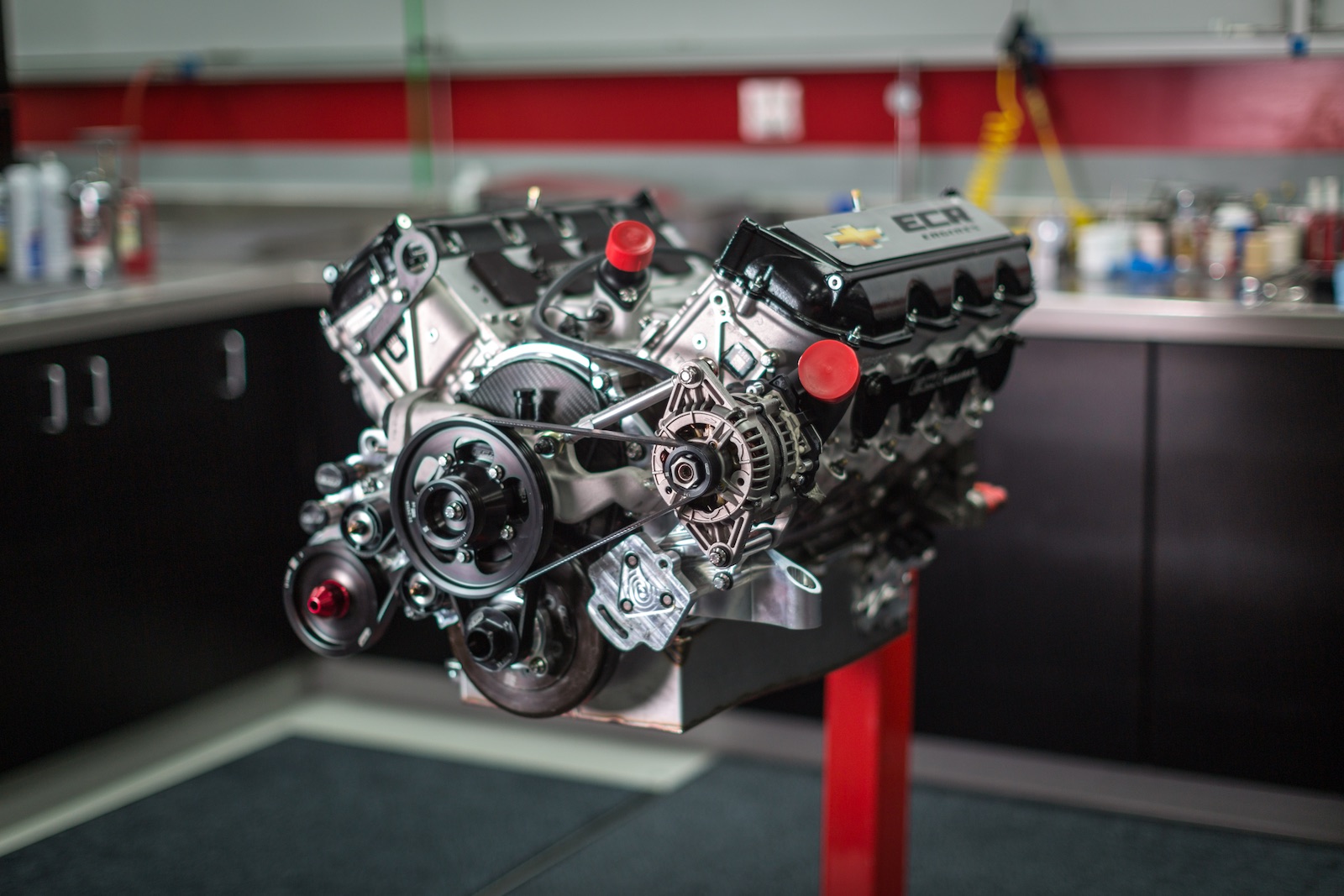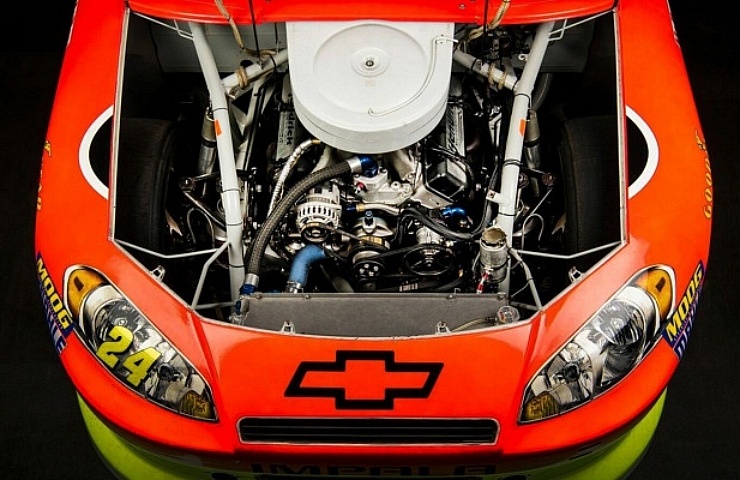Contents
NASCAR mandates that all cars use a V-8 engine displacing 358 cubic inches—roughly 5.8 liters—with a pushrod-actuated valvetrain. A pushrod engine, also known as an overhead valve engine, allows for larger displacement and more airflow. Its heads use rocker arms actuated by pushrods that run into the engine block.
American automakers used to offer engines with roughly the same design as the ones used by NASCAR. But most current street engines use a modern overhead-cam valvetrain. The modern overhead-cam valvetrain, which is more fuel-efficient, is generally preferred for street cars.
So what’s under the hood of a NASCAR racer today?
How Your Engine Differs From a NASCAR Racer
At one time, the V-8 engines in Chevrolet, Ford, Dodge, Buick, and Pontiac racers were based upon the small-block V-8 engines used in the same model street cars. However, both Ford and Chevrolet have developed engine blocks that deviate from their street car engines in minor but meaningful ways. Toyota has developed a pushrod V-8 engine strictly for racing, as every V-8 they build for the US market is of an overhead cam design.

ECR Chevrolet NASCAR engine on stand in shop (Photo: ECR Racing)
Chevrolet
Only Chevrolet still makes pushrod engines for the street. Their current lineup of street V-8 engines in the LS and LT engine family have evolved from the original small-block V-8 introduced in 1955. The current Chevrolet Camaro NASCAR engine is the R07, which is something of a mashup between the two engine families. The big difference is the slightly wider spacing between cylinder bores to improve coolant flow at the higher engine speeds needed in racing. Chevrolet NASCAR engines are built by Hendrick Motorsports and ECR Engines.
Ford
Ford left the traditional pushrod V-8 behind long ago and started transitioning to overhead camshafts with the Modular V-8 in 1990. The old-school pushrod Windsor V-8 engine left regular production models in 2000. Modern Ford cars and trucks use highly developed versions of that Modular V-8, including the Coyote V-8 found in today’s street Mustang. In contrast, the Ford Mustang FR9 NASCAR engine remains somewhat similar to the traditional Windsor V-8, though highly modified by Roush Yates Racing to produce the massive horsepower needed to compete.
Toyota
A newcomer to NASCAR’s top Cup series in 2007, Toyota Racing Development (TRD) worked to design a pushrod V-8 engine that would be substantially similar to the V-8 engines used by other manufacturers. All of the V-8 engines used in modern Toyota and Lexus cars and trucks use overhead camshafts. While Toyota uses a V-8 Camry for racing in NASCAR, the street uses a V-6 engine. All Toyota V-8 engines are manufactured and tuned by TRD in California.
How Much Power Does a NASCAR Engine Make?
For most tracks on the NASCAR calendar, the cars are tuned to produce about 670 horsepower. But this may vary from year to year based on rules changes. On higher-speed tracks, NASCAR uses varying restrictor plates atop the fuel injection ports to reduce the amount of fuel and air entering the engine. These restrictor plates decrease the overall output to around 510 horsepower. Again, these figures are always subject to change depending on track and season.
Restrictor plates came into being in the late 1980s after a series of violent crashes at superspeedways like Daytona and Talladega. Cars traveling at well over 200 mph posed serious dangers to drivers and spectators alike. The restrictors lowered overall speeds; however, now that the cars were more equal in speed, they tended to race more closely together. That created more opportunity for spectacular crashes.
Can You Buy a NASCAR Engine for Your Street Car?
NASCAR engines are substantially similar to engines used in many classic cars and trucks over the years. So it’s theoretically possible to bolt up a race engine to the transmission in a street car. Sellers on eBay and other places offer used racing engines from NASCAR and other racing series. These are typically meant to be used in racing where the freshest race engine isn’t always needed. Of course, some people take these engines onto the street.
That doesn’t mean that it’s a great idea. Racing engines are built to last only for a few hundred or thousand miles between rebuilds, so their tolerances make them less than ideal for street driving. They may take a long time to get up to temperature. Also, they may be very low on power and drivability at lower speeds since they’re tuned to give maximum power at high rpm.
Perhaps more importantly, NASCAR engines don’t have to meet emissions regulations. Many jurisdictions throughout the country have emissions testing. A NASCAR engine will never pass an emissions test. They are only appropriate for pre-emissions vintage vehicles and off-road use. The lion’s share of used NASCAR engines end up in other race cars.
It’s one thing to say you have a race engine under the hood. But if you can’t take it on the street responsibly, it’s probably not worth it.





